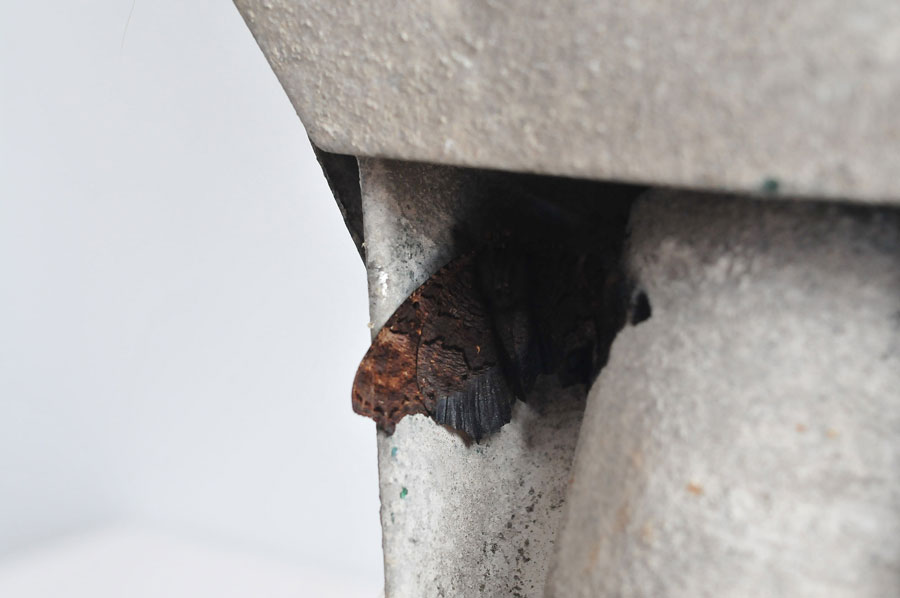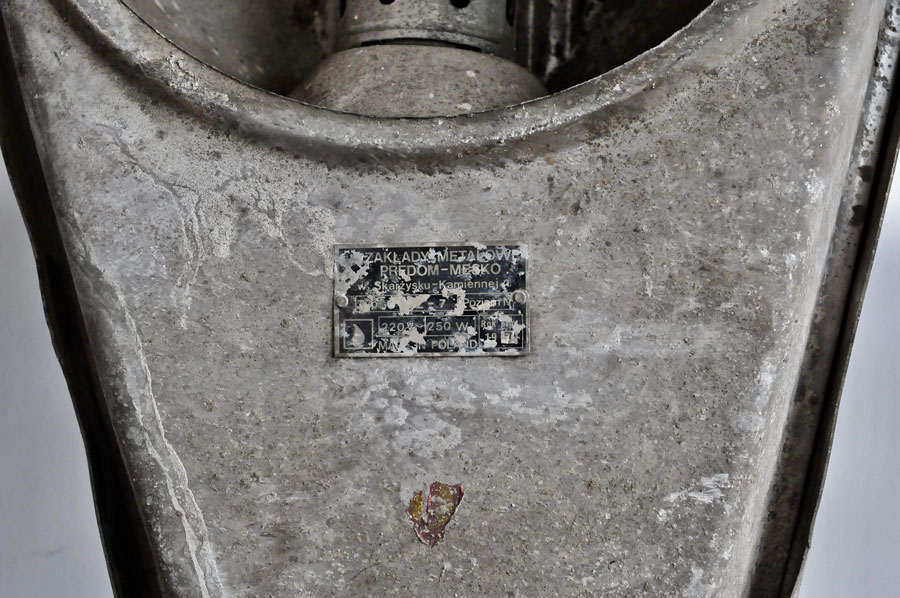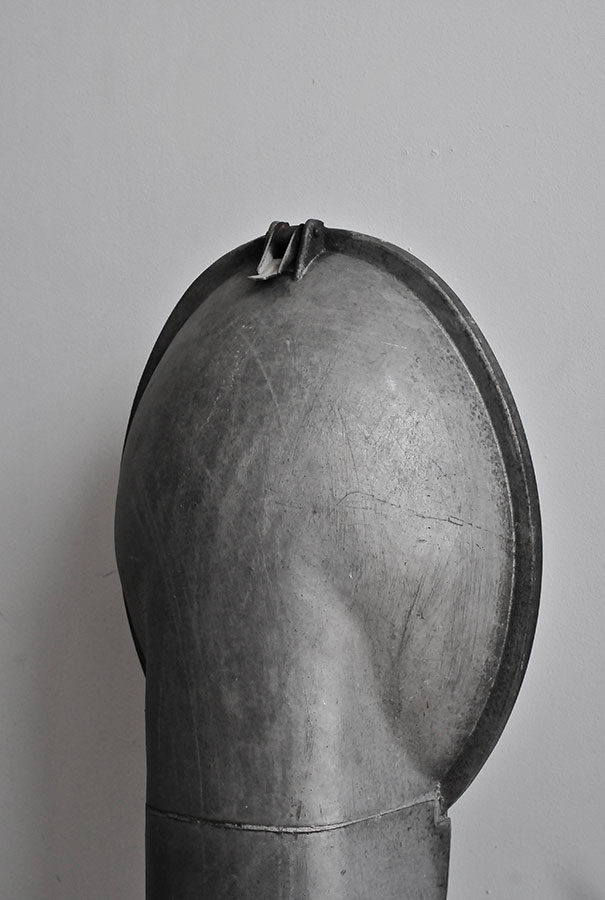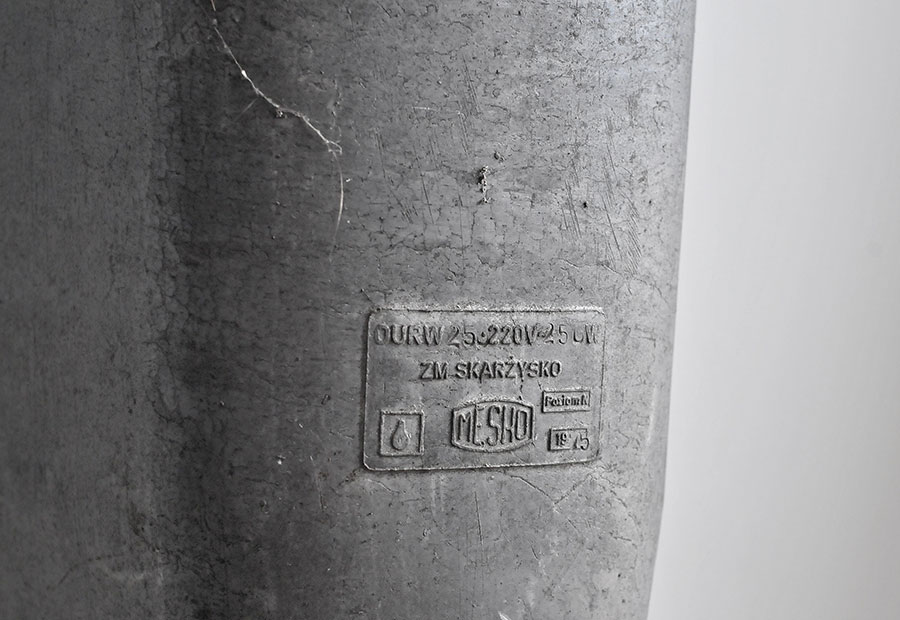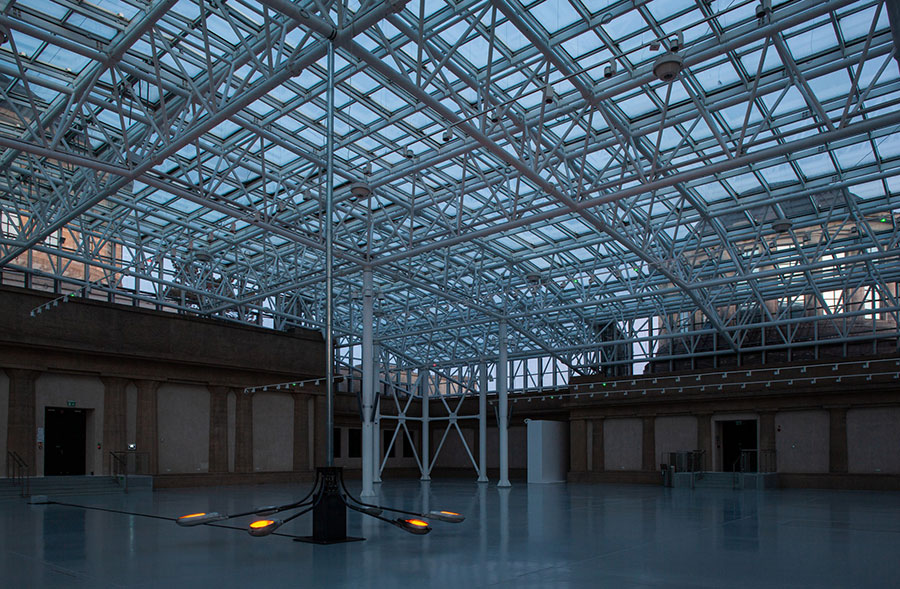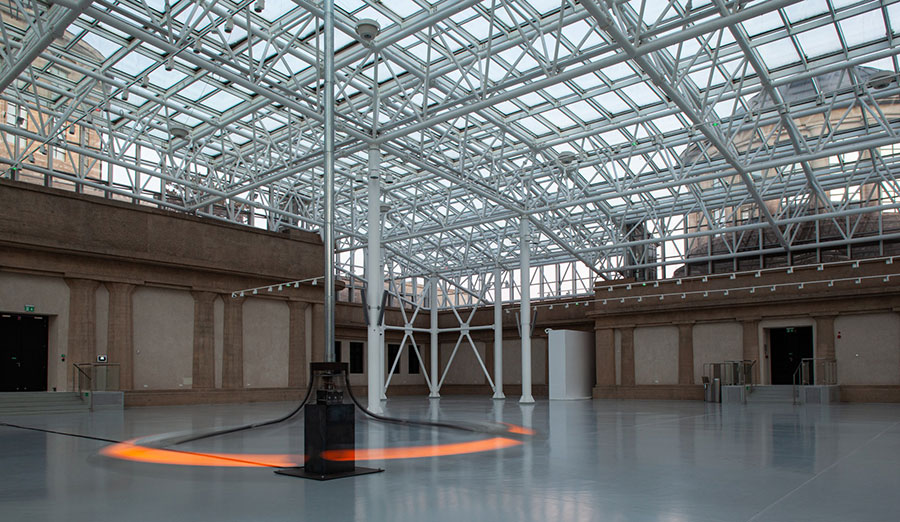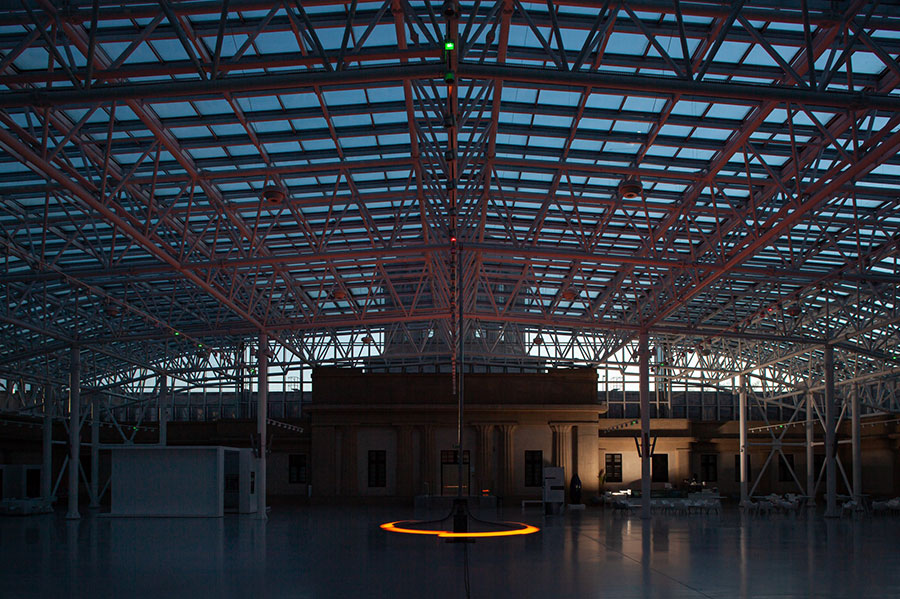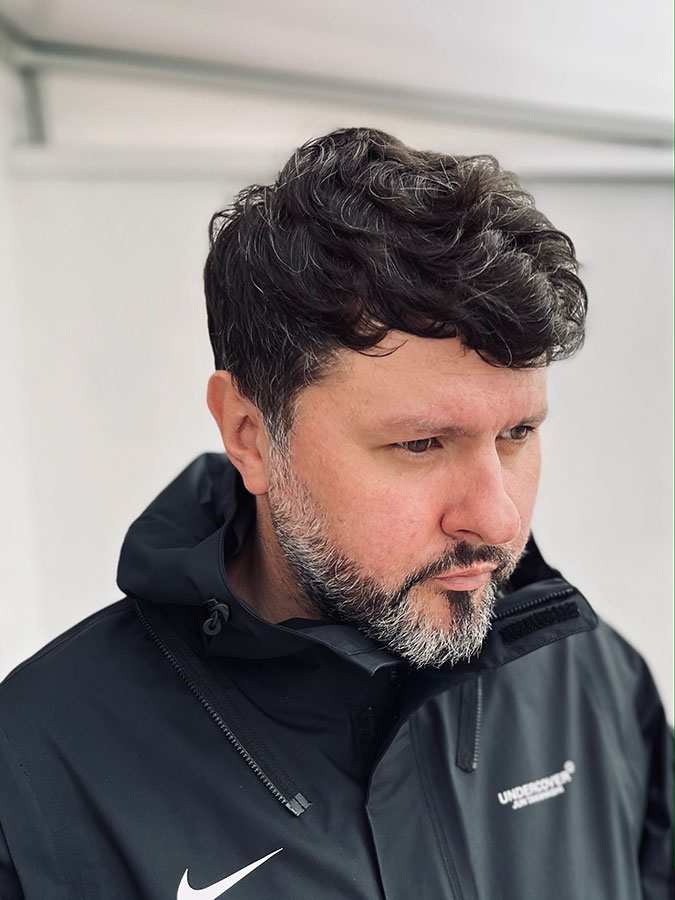9 October – 18 December 2022
Fot. P. Skiba (1–4), M. Lorek (5–7)
Curator of the exhibition: Iwona D. Bigos
A mobile, monumental installation is placed in the very centre of the Four Domes Pavilion, emanating upwards a dimmed beam of light, reflected onto the characteristic industrial construction of the ceiling.
On closer inspection it is possible to identify typical, however turned upside down, street lights assembled from genuine light fittings produced in times of the Polish People’s Republic (PRL). They were widely used around the whole country, and became an inseparable part of the Polish landscape, both rural and urban – Wrocław included. An overturned street light is meant to recall city riots during the time of social unrest, or blackout in parts of the city, used in the previous political regime to remedy economic and/or political crisis, and which finally found its scary climax during the martial law introduced in 1981.
Fot. Antoni Skiba
Piotr Skiba is a graduate of the Academy of Fine Arts at the Faculty of Painting and Sculpture in Wrocław. He is a lecturer at the Academy of Art in Szczecin. He creates objects and installations. His works were presendet at solo exhibitions in galleries and institutions: White Box Art Center New York (US), Wrocław Contemporary Museum (PL), Giorgio Galotti Gallery Turin (IT), Berthold Pott Gallery Cologne (GR), Center for Contemporary Art Ujazdowski Castle Warsaw (PL), Dash Gallery, Kortrijk (BL), BWA Awangarda Wrocław (PL), Spazio ORR Brescia (IT), Leto Gallery Warsaw (PL) Piktogram Warsaw (PL).
Piotr Skiba in his work clearly underlines the physical presence of things and people, putting everything on the same level. In his works stands out a value connected to the square of the “Kosmonautów” residential complex in Wrocław, commonly reffered to as the “COSMOS”, where he lived and worked for years.
His attention is focused on the potential of “lowest rank” disposables. Skiba uses mass-produced objects, parts and materials related to basic, universal human needs. Things such as steel filters, abandoned clothes, broken light bulbs, lighters are often combined in bronze and aluminum castings with organic forms, e.g. with insects, cuticles. The artist lives with them in his apartment, changing, dismantling or assembling into prototype elements, creating sculptural hybrids of neighborhood monuments.
Piotr Skiba’s objects seem to evoke a world where things have taken control, where the human body has only left traces. Similar to Nick Flynn’s poem Statuary (Sculptural) – he works like a bee struggling with the body of a snail or mouse poisoned in a hive. Acting methodically, he struggles with “the object – the body”, to finally expel it or dismantle it in order to, as Flynn described it poetically, “hermetically close it in a propolis and wax tomb above the city’s ordinary monuments.” Skiba’s archaeological excavations describe a man who tries to oppose nature and fails, leaving a feeling of emptiness and melancholy.
